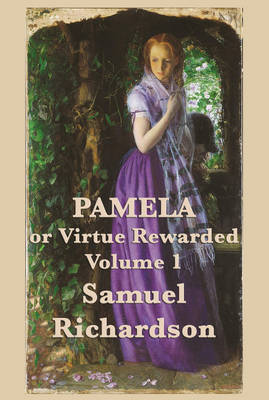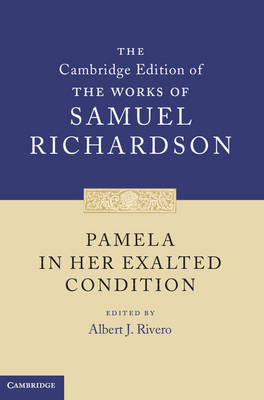The Cambridge Edition of the Works of Samuel Richardson
4 total works
One of the most spectacular successes of the flourishing literary marketplace of eighteenth-century London, Pamela also marked a defining moment in the emergence of the modern novel. In the words of one contemporary, it divided the world "into two different Parties, Pamelists and Anti-pamelists," even eclipsing the sensational factional politics of the day. Preached for its morality, and denounced as pornography in disguise, it vividly describes a young servant's long resistance to the attempts of her predatory master to seduce her. Written in the voice of its low-born heroine, Pamela is not only a work of pioneering psychological complexity, but also a compelling and provocative study of power and its abuse.
This is the first edition to assemble all of the earliest known works by Samuel Richardson (1689-1761), one of the most influential authors in the English tradition. Richardson's exercises in conduct-writing, religious controversialism, anti-theatrical polemic, occasional verse, literary criticism - and his popular and surprisingly revealing edition of Aesop's Fables - resonate throughout his later work while claiming ample legitimacy of their own. Readers familiar with only Pamela, Clarissa and Sir Charles Grandison will gain a fresh appreciation of the genesis of and the historical and cultural complexities at work in these famous novels, and readers new to Richardson will encounter an agile writer who invites closer consideration. A lengthy introduction situates the constituent works in Richardson's career as well as in the period more broadly, and the extensive textual apparatus records the bibliographical histories of the texts and their treatment by their present editor.
Pamela in Her Exalted Condition follows the heroine of Richardson's hugely popular first novel into married life. In the process, he explores both the experience of women beyond the stage of courtship and provides a fascinating insight into the social and cultural life of the mid eighteenth century. The first ever scholarly edition of the novel, this volume features a critically edited text, general and textual introductions, full annotations and textual apparatus. Appendices describe all the editions published in Richardson's lifetime as well as early nineteenth-century editions. The original illustrations from the popular octavo edition of 1742 and Richardson's index are reproduced. The publication of this novel in the Cambridge edition allows the sequel to Pamela to take its rightful place in the critical study of Richardson's development as a novelist.
One of the most important novels of the eighteenth-century, Sir Charles Grandison [1753] shaped the English courtship novel, and was loved and admired by both Jane Austen and George Eliot. The book follows the life of Sir Charles, a man parallel in virtue with Richardson's female paragons Clarissa and Pamela; and a response to the fallible protagonist Tom Jones in Fielding's popular satire of moralising novels. Forming part of the first full scholarly edition of Richardson's complete works, comprehensive general and textual introductions significantly revise and advance understanding of the composition and printing history of Richardson's final novel, and reveal the central place of Sir Charles in the literature of the period. Including Richardson's Historical Index for the first time in any edition, extensive annotations and expansive notes also give readers crucial context, and provides scholars with paths to follow for future research.



